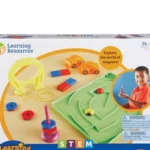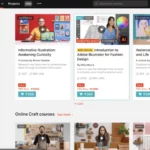Exploring the Benefits of Buying Earlier Edition Textbooks
When it comes to purchasing textbooks, students are often burdened with high costs and limited budgets. However, there is a solution that can alleviate this financial strain – buying earlier edition textbooks. These older editions, although considered “out-of-date,” offer significant advantages in terms of cost savings and access to valuable notes from previous owners. By considering older editions, students can make the most of their limited resources without compromising their academic success. In this article, we will delve into the various benefits of buying earlier edition textbooks and provide helpful tips on how to find them. So, let’s embark on this journey of exploring the advantages and opportunities that come with opting for older editions.
Contents
- Financial Benefits
- Content Similarity
- Considerations
- Tips for Buying Earlier Editions
- Where to Find Earlier Editions
- Benefits of Print Textbooks
- Conclusion
-
Frequently Asked Questions
- 1. Can buying earlier edition textbooks really save me money?
- 2. Will I be able to resell earlier edition textbooks?
- 3. Can I still get discounts on earlier edition textbooks?
- 4. Will the content overlap between earlier and latest editions?
- 5. Are there any supplementary materials included in earlier edition textbooks?
- 6. Are there any copyright restrictions when using earlier edition textbooks?
- 7. Do I need to consider my course requirements before buying an earlier edition textbook?
- 8. Should I consult with my lecturer before buying an earlier edition textbook?
- 9. Should I check for updates before buying an earlier edition textbook?
- 10. How can I research content changes between earlier and latest edition textbooks?
- References
Financial Benefits
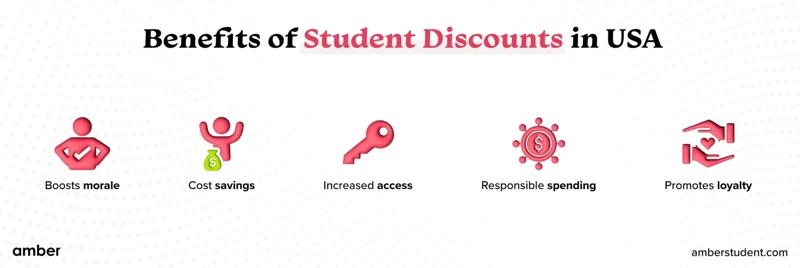
When it comes to buying textbooks, one of the major financial benefits is the lower cost associated with purchasing earlier edition textbooks. These older editions can be found at a much lower price compared to the latest editions. By choosing to buy earlier editions, students can save a significant amount of money, allowing them to stay within their budget. Additionally, these textbooks often have a higher resale value, meaning that students can recoup some of their expenses by selling them after they have completed the course. There may be potential discounts available when purchasing earlier editions, either through online marketplaces or local bookstores. By taking advantage of these financial benefits, students can maximize their savings and make the most of their college experience. To learn more about how to save money on textbooks, you can check out this helpful guide on maximizing savings through college student discounts on textbooks.
1. Lower Cost
When it comes to purchasing textbooks, one of the biggest advantages of buying earlier edition textbooks is the lower cost. Compared to the latest editions, earlier editions are often available at a significantly reduced price. This is mainly because publishers release new editions with updated content and minor revisions, which drives up the price of the latest versions. By opting for earlier editions, students can save a substantial amount of money.
Not only do earlier edition textbooks come at a lower price, but they also eliminate the need to spend on expensive campus housing and meal plans. Online classes are becoming increasingly popular, and these courses offer the flexibility to study from anywhere, eliminating the need for commuting to campus. This not only saves students money on transportation costs but also allows them to save time, which can be used for other productive activities.
Open educational resources (OERs) present another cost-saving option for students. OERs are freely accessible learning materials available online, including textbooks, lectures, and multimedia resources. These resources are often created and shared under open licenses, allowing students to access them without any cost. By utilizing OERs, students can significantly reduce their spending on textbooks, which can be a major expense for college and university students.
In addition to the lower cost of earlier edition textbooks, students can also explore other ways to save money on their course materials. For instance, they can consider renting textbooks instead of buying them, which can further reduce their expenses. Online platforms such as Chegg and Barnes & Noble offer textbook rental services, allowing students to access the required materials for a specific period at a fraction of the cost of buying new textbooks.
To maximize savings, students can also take advantage of college student discounts. Many retailers and online platforms offer special discounts for students, making it easier to afford necessary course materials. By exploring these discounts and comparing prices from different sources, students can ensure they get the best deals and save even more on their textbooks.
Opting for earlier edition textbooks provides students with a cost-effective solution for their academic needs. By taking advantage of lower prices, utilizing open educational resources, considering textbook rentals, and exploring student discounts, students can significantly reduce their expenses and make the most of their limited budgets.
(Anchor text: textbook rentals)
2. Higher Resale Value
When it comes to the resale value of textbooks, buying earlier edition textbooks can be a smart choice. Just like with used cars, where the value of a new car depreciates significantly as soon as it’s driven off the lot, the same principle applies to new textbooks. On the other hand, used textbooks retain their value better over time.
By opting for earlier edition textbooks, you can potentially increase your chances of recouping some of your initial investment when you are finished with the book. This is especially beneficial for students who are looking to save money in the long run. While the cover of a book may show signs of wear and tear, the content inside remains just as valuable as a brand new copy.
Additionally, the availability of online marketplaces and bookstores makes it easier than ever to resell your textbooks. By taking good care of your books, you can ensure that they remain in good condition and fetch a higher resale price.
To further maximize your resale value, it’s important to consider buying textbooks that are in high demand. Researching popular courses or subjects can give you an idea of which textbooks are more likely to sell quickly and at a higher price.
Opting for earlier edition textbooks can not only save you money upfront, but also provide you with the opportunity to recoup some of your investment when you are finished with the book. By considering the higher resale value of used textbooks, you can make a more informed decision when it comes to purchasing your course materials.
Click here to compare textbook prices on popular online platforms, or learn some tips for haggling with university bookstores. Lastly, don’t forget to maximize your savings by taking advantage of college student discounts on textbooks.
3. Potential Discounts
When it comes to being a student, there are numerous opportunities to take advantage of potential discounts. Many businesses in college towns offer discounts to students, ranging from coffee shops and restaurants to bars and dry cleaning services. Even if a business doesn’t advertise a discount, it’s worth asking, as they might be feeling generous or open to negotiation.
In addition to local businesses, students can also enjoy discounted rates for various events and activities. Concerts, performances, and arts events often offer discounted tickets for students. Whether you’re interested in classical concerts, jazz shows, ballet, or theater, being a student can help you save money on cultural experiences.
It’s important to note that potential discounts can vary depending on the location and specific businesses in your college town. Some businesses may have specific student discount programs, while others may offer discounts on a case-by-case basis. It’s always worth inquiring about potential discounts to make the most of your student status.
Here is a table summarizing potential discounts for students:
| Type of Business | Potential Discounts |
|---|---|
| Coffee shops | Student discounts |
| Bars | Student discounts |
| Restaurants | Student discounts |
| Dry cleaning services | Student discounts |
| Concerts | Discounted tickets |
| Performances | Discounted tickets |
| Arts events | Discounted tickets |
Remember, even if a business doesn’t explicitly advertise a student discount, it’s always worth asking. Mom-and-pop operations, in particular, may be more open to offering discounts or negotiating prices. So, don’t be afraid to inquire about potential discounts and make the most of your student status.
Content Similarity
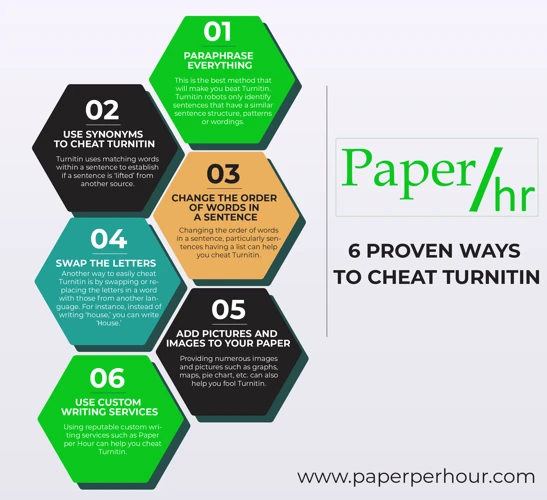
When it comes to purchasing textbooks, one key aspect that students should consider is the content similarity between different editions. Content similarity refers to the extent to which the information and material covered in the older edition aligns with the current edition. This can be particularly advantageous for students as it allows them to save money without missing out on crucial course content. Additionally, supplementary materials, such as study guides or online resources, often remain relevant across editions, further enhancing the value of earlier editions. By understanding the concept of content similarity, students can make informed decisions when buying textbooks and ensure they have access to the necessary information for their studies.
4. Content Overlap
When considering the benefits of buying earlier edition textbooks, one important aspect to explore is the concept of content overlap. Content overlap refers to the similarities in the content between different editions of a textbook.
By opting for an earlier edition of a textbook, students can often find that a significant portion of the content remains the same across editions. This means that even though the edition may be older, the core concepts and information are still relevant and applicable to their course.
The advantage of content overlap is that students can save money without sacrificing the quality of their education. They can access the necessary information and learn the required material without incurring the high costs associated with purchasing the latest edition.
Additionally, content overlap allows students to benefit from the supplementary materials that may be available for the earlier edition. These materials, such as study guides or online resources, are often designed to complement the content of the textbook and enhance the learning experience. By leveraging the content overlap, students can take advantage of these supplementary materials and further enhance their understanding of the subject matter.
It is important to note that while content overlap can be beneficial, there may be instances where significant updates or revisions have been made in newer editions. In such cases, it is crucial for students to assess the extent of the updates and determine if they are necessary for their specific course requirements. Consulting with their lecturer or course syllabus can provide valuable insights into whether the content overlap is sufficient for their needs or if they would benefit from purchasing a newer edition.
Content overlap is a key consideration when exploring the benefits of buying earlier edition textbooks. It allows students to save money while still accessing relevant and valuable content for their courses. By leveraging the content overlap, students can make informed decisions about their textbook purchases and optimize their resources for academic success.
5. Supplementary Materials
Supplementary materials are an important consideration when buying earlier edition textbooks. These materials can include additional resources such as CD-ROMs, study guides, or online access codes. While the main content of the textbook may remain relatively unchanged, these supplementary materials may differ between editions.
When purchasing an earlier edition, it is important to check if the supplementary materials are included or if they are necessary for your course. Some professors may require the use of specific online resources or access codes that are only available with the latest edition. In such cases, it may be necessary to purchase the most recent edition to ensure access to these materials.
On the other hand, if your course does not heavily rely on the supplementary materials or if they are not required for assignments or exams, buying an earlier edition can still be a viable option. You can save money by purchasing the older edition and supplementing your learning with additional resources that are freely available online or provided by your professor.
It is worth noting that while buying an earlier edition may save you money on the textbook itself, you may need to invest in additional resources if the supplementary materials are essential for your learning. It is important to carefully consider the requirements of your course and weigh the cost savings against the potential need for supplementary materials.
When considering an earlier edition of a textbook, take into account the availability and importance of supplementary materials. Evaluate whether these materials are necessary for your course and if they are included or accessible with the older edition. By carefully assessing your needs and the resources provided with each edition, you can make an informed decision that balances cost savings with the requirements of your academic journey.
Considerations
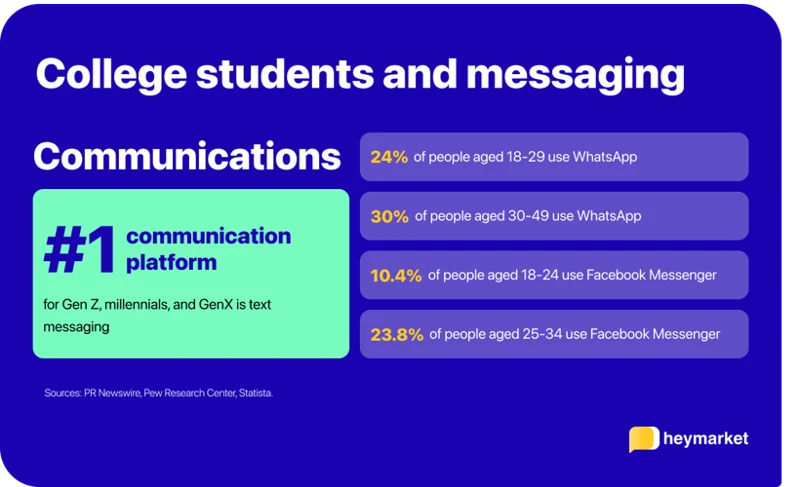
When considering the purchase of earlier edition textbooks, there are a few important factors to keep in mind. Firstly, it is crucial to be aware of any copyright restrictions that may limit the use of older editions. Additionally, it is essential to consider the specific requirements of your course, as some professors may require the latest edition. To ensure you are making an informed decision, it is advisable to consult with your lecturer or professor. It is recommended to check for any updates or significant content changes between the older and newer editions. By conducting thorough research and considering these factors, students can confidently explore the benefits of buying earlier edition textbooks while maximizing their savings and academic success.
6. Copyright Restrictions
When it comes to using copyrighted material, it’s important to be aware of the restrictions that are in place. Copyright protection is limited and only applies to the specific form in which ideas and information are expressed. This means that the creator of a work has the exclusive right to reproduce, distribute, and display their work.
However, there are certain limitations to copyright protection. One of the most significant is the concept of “fair use.” Fair use allows for the limited use of copyrighted material by others without the creator’s permission. For example, reproduction of copyrighted material for classroom teaching purposes is considered fair use under certain conditions.
Determining what constitutes fair use can be challenging, and it’s always best to err on the side of caution. If you’re unsure about using copyrighted content, there are a few options you can consider. First, you can reach out to the creator and ask for permission to use their work. Alternatively, you can look for free alternatives or create your own material. Finally, you can purchase an alternative that has the necessary usage rights.
It’s important to approach the use of copyrighted material responsibly and ethically. Instead of searching for loopholes, it’s better to consider whether you’re being the most responsible digital citizen you can be. By respecting copyright restrictions, you contribute to a society that benefits from new ideas and information while still protecting the rights of creators.
7. Course Requirements
When choosing to purchase earlier edition textbooks, it is important to consider the specific requirements of your course. While the content of the older edition may still be relevant, there may be certain course requirements that are not met by using the earlier edition. It is crucial to thoroughly research and understand the course requirements before deciding to buy an earlier edition.
Some courses may have synchronous requirements, which means that there are set meeting times where the professor instructs learners over video conferencing services. Even if a course primarily uses an LMS (Learning Management System) for asynchronous learning, there may still be synchronous requirements such as live virtual sessions. These synchronous requirements may necessitate the use of certain materials or resources that are specific to the current edition of the textbook.
Additionally, some courses may require proctored tests, which means that students need to take their exams at an authorized testing center. This center could be located on the college or university campus, or it may be a nearby school that offers proctoring services. It is important to understand if your course has any proctoring requirements and whether using an earlier edition textbook would impact your ability to fulfill these requirements.
It is worth noting that while the curricula for online and on-campus students may be the same at some institutions, there may still be differences in textbook requirements. Different bookstores may be used for online and traditional students, which can result in variations in textbook costs and availability. It is essential to research and clarify the textbook requirements and costs specific to your class section.
By thoroughly understanding the course requirements and ensuring that the earlier edition textbook aligns with those requirements, you can confidently make an informed decision about purchasing an earlier edition. This will help you navigate the online learning experience more effectively and ensure that you are adequately prepared for your course.
(Keywords: course requirements, synchronous requirements, asynchronous learning, LMS, proctored tests, textbook costs, textbook availability)
Tips for Buying Earlier Editions
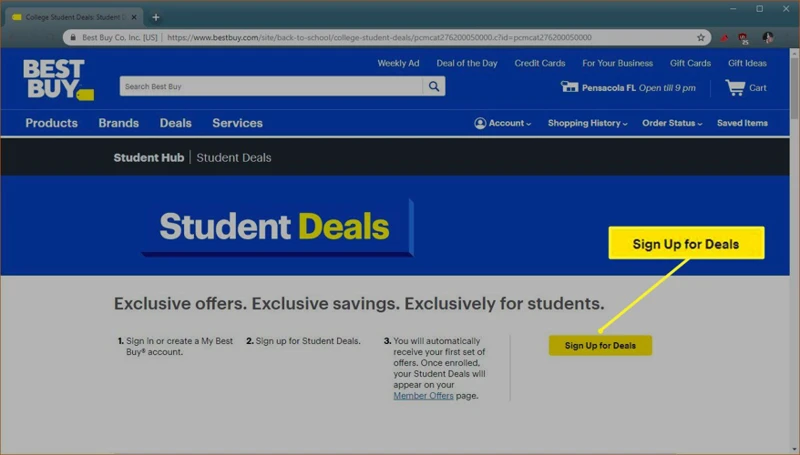
When it comes to buying earlier edition textbooks, there are a few tips that can help you make a wise decision. First, it’s important to consult with your lecturer to ensure that previous versions of the textbook are acceptable for the course. Additionally, checking for updates is crucial as each edition may have changes that could impact the content you need to study. Take the time to research these content changes to ensure that you have the most relevant information. When searching for earlier editions, online marketplaces, local bookstores, and university bookstores are great places to start. These tips will not only help you save money but also provide you with valuable insights from previous owners that can enhance your learning experience. So, don’t overlook the benefits of buying earlier edition textbooks and make the most of your academic journey.
8. Consult with Lecturer
When purchasing earlier edition textbooks, it is always a good idea to consult with your lecturer. Your instructor has extensive knowledge about the course and can provide valuable insights on whether using an earlier edition would be suitable for your needs. They can inform you about any specific requirements for the course and whether you need the latest edition for class discussions.
Additionally, meeting with your lecturer shows your interest in their professional work beyond teaching. Take some time to research their specialization and any publications they have. This background knowledge will not only help you engage in meaningful discussions with them but also allow you to appreciate their expertise outside the classroom.
During your meeting, you can inquire if any of the required textbooks are available on reserve in the library. This can save you the cost of purchasing the book if you only need it for a limited time. Your lecturer may have suggestions on where to find earlier editions or may even have extra copies to lend or sell at a lower price.
Remember, when approaching your lecturer, be respectful and avoid asking if you can skip reading all the assigned books. Instead, focus on gathering information about the availability of the texts and any specific requirements for class discussions. By consulting with your lecturer, you can make informed decisions about purchasing earlier edition textbooks and ensure that you are well-prepared for your course.
9. Check for Updates
When purchasing earlier edition textbooks, it is important to check for updates to ensure that you have the most up-to-date information. While older editions may still provide valuable content, it is possible that newer editions have revised or added information that may be relevant to your studies.
Checking for updates can be done in a few different ways. One option is to look for information on the textbook from the seller. They may provide details about any updates or revisions that have been made to the book. Additionally, you can reach out to professors or instructors who use or require the use of the textbook in their courses. They may be able to provide insight into whether the online content or companion materials have been updated in newer editions.
It is also worth noting that updates to textbooks are not just about cosmetic changes or added features. In some cases, newer editions may include updated research or reflect newer thinking in the field. By checking for updates, you can ensure that you have the most current and accurate information available to you.
Checking for updates is an important step when purchasing earlier edition textbooks. It allows you to stay informed about any revisions or additions that may have been made to the content. By doing so, you can ensure that you have the most relevant and up-to-date information for your studies.
10. Research Content Changes
In the ever-evolving fields of medicine, computers, and business, new research is constantly being conducted. This research often leads to significant advancements and discoveries, which can greatly impact the content of textbooks. As a result, when new editions of textbooks are released, it is not uncommon to see changes in the research content.
These changes can manifest in a variety of ways. For example, new information and insights gained from recent studies may be added to the text. This ensures that students have access to the most up-to-date and relevant information in their field of study. Additionally, advancements in technology or changes in business practices may necessitate the inclusion of new content to reflect these developments.
Supplementary features such as case studies, expert insights, and areas of future study may also be added in new editions. These additional resources provide students with a deeper understanding of the subject matter and offer real-world examples and applications. By including these supplementary materials, the textbook becomes a more comprehensive and valuable resource for students.
In addition to the addition of new content, changes in the organization and structure of the textbook may also occur. Study questions and problem sets may be revised and re-ordered to better align with the learning objectives of the course. The order of chapters may be changed to better match the sequence in which teachers typically present the material.
It is important to note that these changes in content are essential for keeping textbooks relevant and informative. The constant evolution of knowledge and understanding in various fields necessitates regular updates to ensure that students are equipped with the most current information. When considering buying earlier edition textbooks, it is crucial to be aware of potential research content changes and evaluate if the differences between editions are significant enough to impact your learning experience.
By being aware of these research content changes, students can make informed decisions when purchasing textbooks and ensure that they have access to the most relevant and up-to-date information in their field of study.
Where to Find Earlier Editions
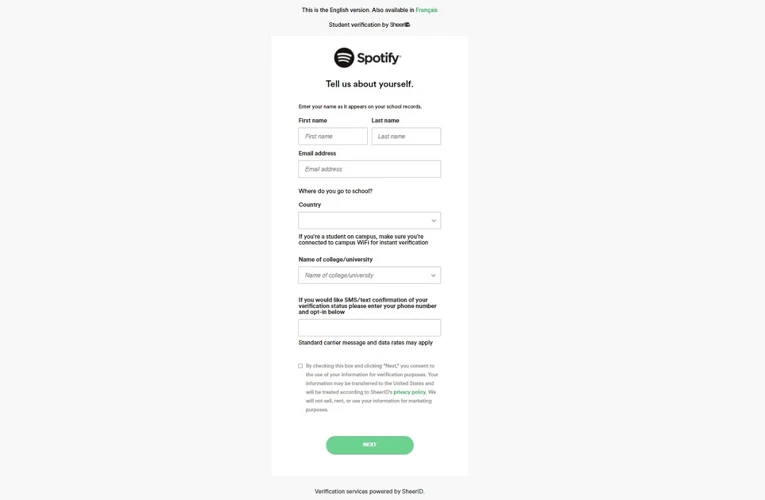
When it comes to finding earlier edition textbooks, there are several options available to students. One convenient way is to explore online marketplaces such as Amazon, eBay, and BookScouter. These platforms host sellers and buyers of international edition textbooks, which can be a cost-effective alternative to the latest editions. To locate these editions online, using keywords like “international edition” and “international” along with the ISBN will help bring them to the top of your search results. Additionally, local bookstores and university bookstores may also carry earlier editions of textbooks, providing students with more options to choose from. By exploring these different avenues, students can expand their choices and potentially find used textbooks with helpful notes and highlights from previous owners, which can aid in their studies.
11. Online Marketplaces
When searching for earlier edition textbooks, one convenient option is to explore online marketplaces. These virtual shopping malls or online marketplaces, such as Alibaba, Amazon.com, and eBay, offer a wide range of products, including textbooks.
Online marketplaces provide a platform where retailers of all sizes can host their online stores. This aggregation of stores within a single navigation framework makes it easier for shoppers to search for specific models, brands, or items. By utilizing the search feature on these online marketplaces, students can quickly find the earlier edition textbooks they need.
To make a purchase on these online marketplaces, customers must have access to the internet and a valid method of payment, such as a credit card or a service like PayPal. Once the transaction is completed, the e-tailer, or online retailer, will either ship the physical textbook directly to the customer’s address or send digital files for digital textbooks.
One advantage of online marketplaces is the ability to compare prices and selection from various vendors. Shoppers can use search engines, online price comparison services, and discovery shopping engines to look up sellers offering the specific earlier edition textbooks they are looking for. This allows students to quickly seek out the best deals available.
It is important to note that some online shops may have restrictions on accepting international credit cards or require the billing and shipping address to be in the same country. However, there are also online shops that allow customers from any country to send gifts anywhere, providing more flexibility in purchasing options.
When considering the cost, it is important to factor in shipping costs, as they can reduce the price advantage of online merchandise. Shipping a small number of items, especially from another country, may be more expensive compared to traditional brick-and-mortar retailers. However, some online retailers offer free shipping on larger orders, particularly for small, high-value items like textbooks.
Another advantage of online marketplaces for retailers is the ability to quickly switch suppliers and vendors without disrupting the shopping experience for users. This flexibility allows retailers to adapt to changes in availability or pricing, ensuring that students can find the earlier edition textbooks they need.
Online marketplaces provide a convenient and accessible option for students looking to purchase earlier edition textbooks. These platforms offer a wide selection, competitive pricing, and the convenience of online shopping. By utilizing online marketplaces, students can make the most of their limited resources while still accessing the textbooks they need for their academic success.
12. Local Bookstores
Local bookstores can be a valuable resource for finding earlier edition textbooks. These bookstores, often located near college campuses, understand the needs of students and may have a selection of used textbooks at affordable prices. By purchasing from local bookstores, students can support small businesses in their community and potentially negotiate better prices.
Additionally, buying from local bookstores has the advantage of faster delivery. Since the bookseller is in close proximity to the student, the textbooks can be obtained quickly, eliminating the need for long shipping times. This is especially beneficial for students who need their textbooks urgently or want to start studying as soon as possible.
Local bookstores provide an opportunity for students to browse through the available textbooks in person. This allows them to physically inspect the condition of the books, ensuring that they are in acceptable quality before making a purchase. Students can also ask the bookstore staff for recommendations or inquire about any specific editions they may be looking for.
Local bookstores offer convenience, personalized service, and the potential for cost savings when it comes to buying earlier edition textbooks. By exploring these options, students can find the textbooks they need while supporting their local community.
13. University Bookstores
While it may be tempting to visit your college’s bookstore for all your textbook needs, it is important to note that this is not the most cost-effective option. Even used textbooks at the bookstore tend to be sold at higher prices compared to online alternatives. In fact, new textbooks are often more expensive at the bookstore than anywhere else. However, there is an exception to this rule – sometimes professors create custom-printed packets that are only available at the bookstore.
It is worth mentioning that many college bookstores are operated by commercial third parties under contracts with the university administration. These contracts grant the bookstore exclusive rights to sell books on campus. The introduction of an inclusive access program, which offers textbooks at lower prices, may be seen as a violation of the contract. It is important to understand that bookstore owners are not necessarily driven by greed, as they would likely demand the same exclusive rights if they were in the same position.
Despite these factors, around 47% of students still choose to buy their textbooks from college bookstores, hoping to find the exact item they are looking for. Additionally, physical shops often run promotional price-offs, which further attracts students seeking cheap college textbooks. In the United States, the collegiate population purchases their textbooks and course materials from approximately 5,000 retail stores, with each generating an average of $2.3 million in sales.
Interestingly, surveys have shown that a majority of college students prefer printed textbooks over digital versions. They find that digital textbooks can become inaccessible at the end of the semester, which is not the case with physical textbooks. The ability to easily take notes and the tactile experience of reading a physical book are also factors that contribute to the preference for printed textbooks.
If you are looking for alternatives to university bookstores, consider checking out your local library. While you may not find an extensive collection of textbooks, you may come across copies of many texts used in liberal arts courses. This can be especially beneficial for English majors and similar disciplines, as literature classes often revolve around classic texts that are readily available for rent from the library.
Another option is to explore independent bookstores and smaller sellers. These establishments are often more open to haggling, which can lead to significant cost savings. Additionally, charity shops near your university may receive a large number of textbooks at the end of each term, making them worth checking out for cheap options.
While university bookstores may seem like the convenient choice, they are generally not the most cost-effective option for purchasing textbooks. Online alternatives often offer lower prices, and libraries can provide access to some course materials. Exploring independent bookstores and charity shops can also lead to finding cheaper textbooks. It is important for students to consider their budget and explore different options to make the most of their resources.
Benefits of Print Textbooks
When it comes to purchasing textbooks, the benefits of print textbooks cannot be ignored. Print textbooks offer increased engagement and easier note-taking for students. With fewer distractions and the ability to physically interact with the material, students are more likely to stay focused and actively participate in class discussions. Additionally, the tangible nature of print textbooks allows for easier note-taking, highlighting, and bookmarking, making it easier for students to review and retain information. In a digital age where electronic devices can be distracting, print textbooks provide a reliable and effective study tool. So, while digital resources may have their advantages, the benefits of print textbooks should not be overlooked when it comes to enhancing the learning experience.
14. Increased Engagement
When students choose to buy earlier edition textbooks, they not only benefit financially but also experience increased engagement with their academic materials. The use of older editions encourages students to actively participate in their learning process, leading to a deeper understanding of the subject matter.
One of the reasons for this increased engagement is the presence of content overlap between older and newer editions. While some information may be updated in newer editions, a significant portion of the content remains the same. This overlap allows students to follow along with the current curriculum while using the more affordable earlier edition textbooks.
Older editions often come with supplementary materials that can enhance the learning experience. These materials may include study guides, practice questions, and additional resources that provide further opportunities for engagement and comprehension. By utilizing these supplementary materials, students can reinforce their understanding of the course material and actively participate in their own learning journey.
Another aspect that contributes to increased engagement is the ease of note-taking. Older edition textbooks often have more space in the margins and between lines, allowing students to jot down their thoughts, questions, and reactions to the content. This encourages active reading and promotes critical thinking as students interact with the text, making connections and annotations.
By engaging more deeply with the course material, students are likely to retain information better and develop a stronger grasp of the subject matter. This increased engagement can lead to improved academic performance and a more enriching learning experience.
Choosing to buy earlier edition textbooks not only provides financial benefits but also promotes increased engagement with the content. The presence of content overlap, supplementary materials, and improved note-taking opportunities all contribute to a more interactive and immersive learning experience. Students who opt for older editions can actively participate in their education, enhancing their understanding and overall academic success.
15. Easier Note-Taking
Taking notes can be a challenging task for students, but buying earlier edition textbooks can actually make this process easier. When you have access to physical textbooks, you can easily highlight important information, write annotations in the margins, and flag key concepts. This tactile interaction with the material can enhance your understanding and retention of the content.
One advantage of physical textbooks is that they allow for a more personalized note-taking experience. You can use different colors of highlighters or pens to categorize information, making it easier to review and study later on. Additionally, the act of physically writing down notes has been shown to improve memory and comprehension.
Another benefit of using physical textbooks for note-taking is the ability to easily flip back and forth between pages. This makes it simpler to cross-reference information and connect concepts from different parts of the book. It also allows for quick access to specific sections during class discussions or when studying for exams.
Physical textbooks provide an opportunity for spatial organization. You can use sticky notes or bookmarks to mark important chapters or sections, creating a visual roadmap for your studying. This visual organization can help you quickly locate relevant information when reviewing your notes.
By utilizing earlier edition textbooks for note-taking, you can develop a more structured and comprehensive set of notes. These well-organized notes will serve as a valuable resource when reviewing for exams or completing assignments. Remember, the key to successful note-taking is not just the format, but what you do with the notes afterwards – frequent review and further annotation are essential for building a deep understanding of the material.
Choosing to buy earlier edition textbooks can significantly enhance your note-taking experience. The physical nature of these textbooks allows for personalized organization, easy cross-referencing, and spatially visualized notes. By taking advantage of these benefits, you can improve your study habits and set yourself up for academic success.
Conclusion
In conclusion, buying earlier edition textbooks can be a smart choice for students looking to save money and maximize their resources. Despite being considered “out-of-date,” these older editions offer several benefits that should not be overlooked.
Firstly, the financial benefits of purchasing earlier edition textbooks cannot be ignored. These textbooks are often available at a lower cost compared to the latest editions, allowing students to stretch their limited budgets further. Additionally, older editions may have a higher resale value, providing an opportunity for students to recoup some of their initial investment.
Furthermore, potential discounts are another advantage of buying earlier edition textbooks. Online marketplaces, local bookstores, and university bookstores often offer discounted prices for older editions, making them even more affordable for students.
In terms of content similarity, earlier edition textbooks often have significant content overlap with the latest editions. This means that students can still access the core information and knowledge required for their courses, even if they choose to use an older edition. Supplementary materials, such as study guides and online resources, can also be easily found or accessed separately.
However, it is important for students to consider some factors before purchasing earlier edition textbooks. Copyright restrictions may limit the availability of certain materials or prevent access to updated content. Additionally, students should ensure that the earlier edition aligns with their specific course requirements to avoid any potential discrepancies.
To make the most informed decision, students should consult with their lecturers or professors. These academic professionals can provide guidance on whether using an earlier edition will be suitable for their courses. It is also recommended to check for any updates or revisions made to the content of the earlier edition, as this information can be crucial for staying up-to-date with the latest information.
When it comes to finding earlier edition textbooks, there are several options available. Online marketplaces, such as Amazon or eBay, offer a wide range of older editions at competitive prices. Local bookstores and university bookstores may also have a selection of earlier editions in stock.
Lastly, it is worth noting that print textbooks still offer benefits that cannot be replicated by digital alternatives. Increased engagement and easier note-taking are advantages that students can experience when using print textbooks. The tactile nature of print textbooks allows for a more immersive reading experience and facilitates the process of jotting down important notes and annotations.
In conclusion, buying earlier edition textbooks can be a cost-effective and practical choice for students. By considering the financial benefits, content similarities, and necessary considerations, students can make informed decisions about purchasing earlier editions. Through thorough research and consultation with lecturers, students can find the best sources for earlier edition textbooks and make the most of their academic journey.
Frequently Asked Questions
1. Can buying earlier edition textbooks really save me money?
Yes, purchasing earlier edition textbooks can significantly reduce your expenses. These editions are often available at a lower cost compared to the latest editions, allowing you to save money without compromising on the content.
2. Will I be able to resell earlier edition textbooks?
Absolutely! Earlier edition textbooks still have a resale value, especially if they are in good condition. Many students are willing to buy older editions at a discounted price, making it easier for you to recoup some of your initial investment.
3. Can I still get discounts on earlier edition textbooks?
Yes, you can still find discounts on earlier edition textbooks. Online marketplaces and local bookstores often offer discounted prices on older editions, allowing you to save even more money.
4. Will the content overlap between earlier and latest editions?
There is often content overlap between earlier and latest editions of textbooks. While there may be some updates or additions in the latest edition, the core concepts and information usually remain similar, making earlier editions still valuable for studying.
5. Are there any supplementary materials included in earlier edition textbooks?
Supplementary materials, such as study guides or online resources, may not be included in earlier edition textbooks. However, you can often find these materials separately or access them through other sources like online libraries or educational websites.
6. Are there any copyright restrictions when using earlier edition textbooks?
No, there are no copyright restrictions when using earlier edition textbooks. As long as you have legally purchased the textbook, you are free to use it for your academic purposes.
7. Do I need to consider my course requirements before buying an earlier edition textbook?
Yes, it is important to consider your course requirements before purchasing an earlier edition textbook. Some courses may require specific editions or may have updated content that is only available in the latest edition.
8. Should I consult with my lecturer before buying an earlier edition textbook?
It is always a good idea to consult with your lecturer before buying an earlier edition textbook. They can provide guidance on whether the earlier edition will be sufficient for your course and if there are any specific requirements.
9. Should I check for updates before buying an earlier edition textbook?
Yes, it is recommended to check for any updates or revisions in the latest edition before purchasing an earlier edition textbook. This will help you ensure that you have access to the most up-to-date information.
10. How can I research content changes between earlier and latest edition textbooks?
You can research content changes between earlier and latest edition textbooks by comparing the table of contents, reading reviews or summaries of the latest edition, and reaching out to fellow students or online communities for insights on any significant changes.



